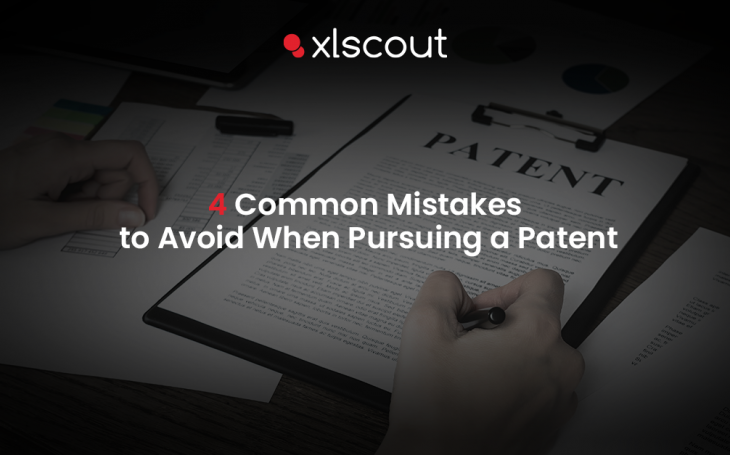
If you want to profit from something new and amazing you created, or at least get credit for your innovation, obtaining a patent can help you secure ownership rights to your intellectual property. However, the patent process is lengthy, complicated, and expensive. It also needs to be completed in each country where you want to be protected. So, before you embark on your patent journey, take a moment to ensure that you don’t unintentionally create a roadblock to your own success. Here are the four common mistakes that you should avoid while pursuing a patent.
1. Ensure that the Invention is Patentable
Patents grant you territorial rights, which means you are only protected in the country or region where your patent is granted. Most countries grant patents based on three basic criteria: the invention must be novel, non-obvious, and useful. However, different countries have different interpretations—and entire debates about whether certain subject matter areas (e.g., animals, plants, and DNA) are even patentable at all. So, first and foremost, you must decide where you want to file and then ensure that your creation meets the patentability criteria in each one of those countries.
2. Confirm that no one else has Thought of it First
Patents are only granted for novel, commercially viable ideas. If anything about your invention becomes public at any time, it can invalidate your patent application. Prior art is proof that your creation is already known. Before you try to patent your idea, you must conduct a prior art search to make sure that you are the first to think of it.
Almost anything can be considered prior art. It could be a college thesis, a prehistoric cave painting, a website, a magazine article, or a modern-day Tweet. In fact, the European Patent Office (EPO) states that “prior art does not need to exist physically” at all. According to the EPO, “it is enough that someone, somewhere, sometime previously has described, shown, or made something that contains a use of technology that is very similar to your invention.”
How XLSCOUT’s Novelty Checker can help you avoid this common mistake?
XLSCOUT’s Novelty Checker makes prior art searches easier for inventors. The tool searches for similar inventions to yours to determine whether a patent is feasible.
A step-by-step guide to conducting an AI-powered prior art search with Novelty Checker can be accessed by clicking here.
XLSCOUT put the use of reinforcement learning to its AI-based Novelty Checker (patent searching tool) to get quality prior art search reports in just 5 minutes. The Novelty Checker uses reinforcement learning to filter the noise by showing the relevant results on top of the list. To be precise, it assists in conducting patentability search to help you ensure that your innovation is unique. By selecting a few relevant and non-relevant results, users can apply them to the result set. The system takes the user’s feedback and then learns from it. It uses conceptual searching and re-ranks the results by bringing the quality results to the top and sending the noise to the bottom.
3. Avoid Discussing It!
This is one of the most common mistakes to avoid. You’re undoubtedly excited about your invention, but you can’t let it become public knowledge if you intend to successfully patent it. That could be considered prior art. Before telling someone about your work, one practical way to ensure confidentiality is to sign a non-disclosure agreement (NDA). This includes anyone who tests your invention or otherwise assists with its development, in addition to any patent attorneys or agents who conduct a patent search on your behalf.
Note: In the United States, you generally do not need to request a confidentiality agreement from a patent attorney or agent because they are required by Title 37 of U.S. federal law to treat your information confidentially—even if you are just a prospective client. In other countries, you must learn about the local laws that govern your interactions.
4. Do not Submit an Ineffective Patent Application
When you are certain that the idea you have is patentable, you can start working on its patent application. If you’re writing your own patent application or preparing documents for a patent attorney or agent, it’s critical that you explain your invention in a way that a non-expert can understand. Remember the following:
- Processes that appear obvious to you may not appear so to a patent examiner or lawyer. You must spell out each step in great detail.
- Terminology that is second nature to you may appear as incomprehensible jargon to others. Make a point of explaining any unfamiliar terminology.
- Illustrations cannot compensate for deficiencies in descriptive text. Illustrations supplement the text rather than replacing it.
To summarize, making assumptions about what others know is risky. Once issued, a patent is a legal document whose wording can be the deciding factor in causing or resolving a dispute. Make sure to leave nothing out to give your innovation the best chance of success.

